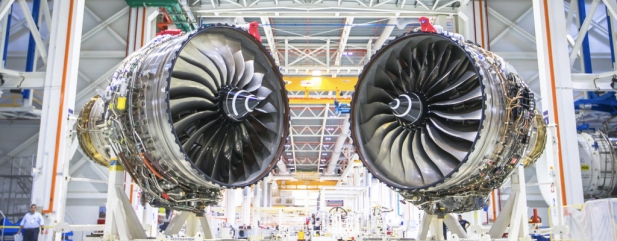Archived article
Please note that tax, investment, pension and ISA rules can change and the information and any views contained in this article may now be inaccurate.
The options for Rolls-Royce shareholders as £2 billion rights issue looms

Shareholders in Rolls-Royce (RR.) are being asked if they want to back a £2 billion rights issue aimed at securing the company’s future.
The rights issue is fully underwritten by a panel of investment banks, meaning Rolls-Royce is guaranteed to get the full amount even if shareholders don’t take up all the new shares.
The engineer is also issuing a further £1 billion worth of debt, has agreed a new two-year loan facility of £1 billion (contingent on the success of the rights issue); and received a guarantee from the UK Export Finance agency on a further £1 billion loan.
WHY IS ROLLS-ROYCE ACTING NOW?
Disruption to the aviation sector is having a significant impact on demand for the aircraft engines Rolls-Royce makes and sells.
The company expects to see a cash outflow of £4 billion in 2020 and about £3.2 billion worth of debt is due to be repaid in 2021.
The importance of the long-term servicing and maintenance agreements associated with these engines means the reduction in the number sold now could affect the business for years into the future even if or when the airline industry recovers.
WHAT ARE SHAREHOLDERS’ OPTIONS?
Shareholders have four main options. The first option is that they can exercise the right to buy new shares at 32p – this a 10-for-three issue meaning shareholders can buy 10 new shares for every three they already own.
The second option for shareholders is to sell their rights to someone else in return for cash, without having to sell their existing shares. The amount a shareholder will receive for their rights will depend on what people are willing to pay for them.
The rights issue price of 32p represents a 41.4% discount to the theoretical ex-rights price of 54.6p per existing share by reference to the closing price of 130p on 30 September 2020. The theoretical ex-rights price is the implied market price once all the new shares are issued.
The third option is to sell some of the rights and potentially use the proceeds to buy some of the discounted shares.
The fourth option is to do nothing. In this situation, shareholders’ rights are expected to be sold in the market at the best available price by Rolls-Royce and the proceeds returned to shareholders via their investment platform provider minus any charges.
WHAT HAPPENS NEXT?
A shareholder vote to approve the rights issue will be held on 27 October. Investors will receive their nil paid rights on the ‘ex rights date’ of 28 October providing they haven’t sold their holding before that date.
The period in which to exercise or sell the rights is expected to run from then until 11 November although the deadline is likely to be 6 November for many investment platforms. This is expected to be confirmed soon. The new fully paid shares will be credited to accounts on or around 12 November.
WHERE DOES THIS LEAVE THE COMPANY?
Once the rights issue and rest of the recapitalisation process is complete the company should, on its own assessment, be able to weather macro-economic risks through to 2022 when it expects to return to strong cash generation.
Investment bank Jefferies earlier this year noted: ‘We don’t envisage airlines placing large orders for new aircraft before 2024 or Airbus and Boeing launching new aircraft programmes before the
end of 2025.’
The duration of the pandemic and the restrictions on air travel associated with it remain highly uncertain.
Rolls-Royce itself has noted that total maintenance demand is now expected to be up to 10% to 15% lower in 2022 than previously expected. It is taking steps to adapt to lower demand by reducing the size of its civil aerospace business and pivoting towards its defence and power systems operations. It also plans to sell its ITP Aero aero-engine subsystem design arm.
Pre-Covid-19, the engineer was having to deal with faults on its Trent 1000 engines. This situation had escalated from what was initially characterised as a relatively minor issue to one that was expected to cost upwards of £1.5 billion to fix.
Important information:
These articles are provided by Shares magazine which is published by AJ Bell Media, a part of AJ Bell. Shares is not written by AJ Bell.
Shares is provided for your general information and use and is not a personal recommendation to invest. It is not intended to be relied upon by you in making or not making any investment decisions. The investments referred to in these articles will not be suitable for all investors. If in doubt please seek appropriate independent financial advice.
Investors acting on the information in these articles do so at their own risk and AJ Bell Media and its staff do not accept liability for losses suffered by investors as a result of their investment decisions.
Issue contents
Editor's View
Feature
First-time Investor
Great Ideas
- Novacyt still looks really cheap despite share price rally
- Panoply busy signing new contracts and buying businesses
- Premier Foods poised for Hovis windfall
- Don’t miss out on this high-quality European growth company
- Take profits on gold miner Centamin
- Shares in AG Barr start to pick up after reassuring results
Investment Trusts
Money Matters
News
- How Trump’s Covid-19 diagnosis has impacted stock markets
- The options for Rolls-Royce shareholders as £2 billion rights issue looms
- What Asda’s sale means for supermarket rivals
- Cineworld faces liquidity crunch as cinemas close again
- Housebuilders rally on Boris Johnson’s bid to help first-time buyers

 magazine
magazine









